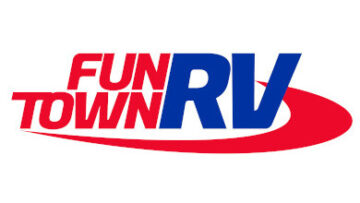Q&A with Wells Fargo’s Chad Lyon
The leader of Wells Fargo’s RV commercial lending business discusses the state of the finance market today and where things are likely to go in the near future.

Chad Lyon has more than a year under his belt as the commercial leader of Wells Fargo’s RV and marine division. In this role, he has his finger on the pulse of an industry hit by waves of change.
Though storms rage across the industry, the 28-year commercial lending expert pins his hopes on a sunny future. He stresses the RV industry continues to grow and that he expects this trend to continue. The pandemic, he says, has permanently reshaped how people travel and pushed more people into full-time and recreational RVing.
RV PRO caught up with Lyon to gather his views on the state of the industry and what lies ahead.
 What is the current state of the RV industry?
What is the current state of the RV industry?
LYON: In our customer base, we saw a significant increase in the dollar standing of our loans. As the supply chain righted itself, shipments picked up in the fourth quarter of 2021 and in the first quarter of 2022. The units being shipped were at a higher price point than historically. The number of units we’re financing are below pre-COVID levels, but the dollars exceed it. There are some expensive units going to dealerships. We also started to see principal balances grow and inventories ship into camping selling season, where typically we would see balances start to fall off. Seasonally, shipments continued to be strong. Inventory in terms of units is in a good spot. The market continues to grow. But dealers and manufacturers have slowed ordering and shipments. Our volume has fallen over the last two months. We’re seeing a material retrenchment in shipments. We also are seeing improvement in our liquidation. We think we may see better retail numbers over the next month on the SSI report. We’re seeing improvement, and we’re getting paid up. The industry had about seven weeks of inventory in Q2. Now there is about 23 weeks of inventory. We’re close to normalized units, but dealers are making sure they do not return to pre-COVID levels. They’re finding a healthy balance.
Do you think transaction prices will return to normal as things normalize?
LYON: The average transaction price is up 20% to 30% on invoices. But I don’t think prices will come down. We’re in a higher price point environment. But the rate of change will stop. I’m not expecting further increases. There will be some retrenching in pricing units. But overall, price points will remain sustainably higher. We also will see a return of incentives. But I don’t see any long-term repricing that will bring average unit price back toward 2019 levels. Prices are permanently higher.
With limited inventory, we saw dealers shift to selling into the pipeline and keeping fewer RVs on their lots. With availability returning to normal levels, will dealer floorplans also return to previous levels?
LYON: No, they will be somewhere in between. The industry requires a certain amount of inventory and floorplan availability on different models. This important part of the selling cycle will not change. But dealers will desire more efficiency and fewer units. They will want a good breadth of inventory, but not at pre-pandemic levels. Dealers have realized they operate better with less inventory. There is less discounting and greater efficiencies. They will want to retain that.
What are you seeing for interest rates on floorplan financing compared to a year ago?
LYON: The Federal Reserve fights inflation by raising the prime interest rate. It’s already up 2.25 basis points, year over year. With a higher interest rate, the cost of financing is increasing. Dealers are carrying more inventories than they did a year ago. It’s a double hit from a profitability standpoint. Unfortunately, we’re going to have higher interest rates for a period of time.
How will higher interest rates affect floorplan financing?
LYON: It will be an additional carrying cost to the dealers. But floorplan financing is also a typical cost of business. Retail financing is interesting, however. We’ve seen long-term rates
go up. But they’re still at a historically low number. I don’t think consumers will be as sensitive to interest rate increases. But just as we have seen with housing, as interest rates go up, housing loans go down. It will be a factor. But I don’t think it will be as big a factor as you would expect. We forecast short-term and long-term interest rates will come down slightly. That will help the retail side.
What risks are there before dealers as they face off against higher interest rates, inflationary pressures, inventory challenges and more?
LYON: There is a lot of uncertainty. I’ve never had more demand for economic insights than I have had over the last 12 months. Every customer I have is asking what Wells Fargo sees coming. There are a lot of questions around economic conditions. But dealers have had a strong, two-year run. Sales were up. Demand for products was up. Margins were up. They generated a lot of cash over the last couple of years. Even as unit sales slide, they will be OK. Unit sales are down about 20% this year, but revenue is only down about 7%. Dealer earnings are materially better than in 2017, 2018 and 2019, which were good years. The industry is in great shape to weather the upcoming economic storm as long as there’s not a big systemic shock. People want to be outdoors. That will contribute to strong product demand.
Where do you think demand will head in 2023?
LYON: We think unit sales will be down slightly next year. With all the uncertainty, it’s going to be challenging to grow unit sales. But there are still healthy dollar amounts flowing into the market.
How should dealers adjust their floorplans for 2023?
LYON: Dealers have an opportunity to rebuild inventories right now. Now is the time to assess what is selling and getting the right inventory mix. With the short supply of the last two years, there was a desire just to have products. Dealers often bought product without a discerning eye. As inventory levels return to normal, they need to reflect on what is the right mix for their retail footprint. Dealers need to ask: What is the right product mix now that availability is back? How do I make sure I stock the right units and get the right floorplan?
What are you seeing in terms of optimism for the future?
LYON: If you remove the uncertainty, there is a lot of optimism about the industry. There’s optimism about technology advances, and a strong desire to take part in the outdoor lifestyle. The industry has a very long-term bullish outlook. Everyone feels very good about it. It is hard though. Dealers have to rebuild their inventories amid economic uncertainty. There is a level of complexity to work through. But long-term, the prospects feel very good. The industry is very healthy.
How does the RV industry compare to the other markets Wells Fargo serves?
LYON: The two most relevant markets are motorsports and marine. The RV industry normalized faster and sooner than those industries did. RV supply chains and OEMs got their act together in Q3 and Q4 of 2021. Powersports and motorsports still lack a consistent supply. Those industries still seek to ramp up inventories. But the RV business is already back to normalized inventory levels. That is consistent with what we’ve always seen historically. The RV market cycles sooner than the other industries. It’s not surprising that it recovered quicker than the other markets.
How is Wells Fargo supporting the RV industry as it goes through the season change?
LYON: We are in it for the long term. This consistency is important. We are a consistent provider that supported dealers in the whipsaw of the last two years. There’s been higher demand for economic data. We have been trying to share what we’re seeing and what our bank economists are forecasting. There are so many things happening in the macro economy and things change daily. We try to give insights into what we’re seeing or forecasting to help dealers make informed business decisions.

